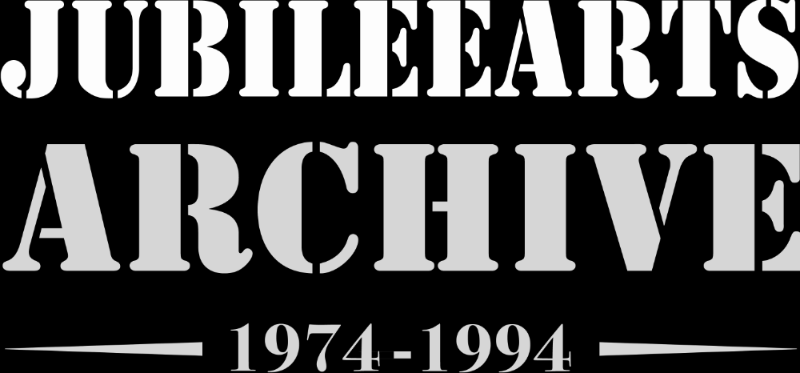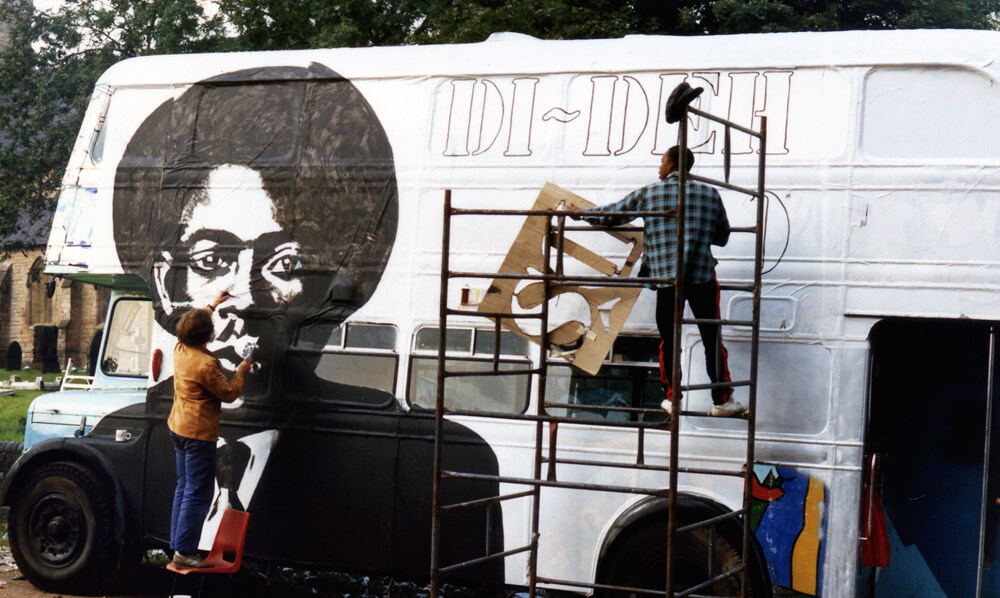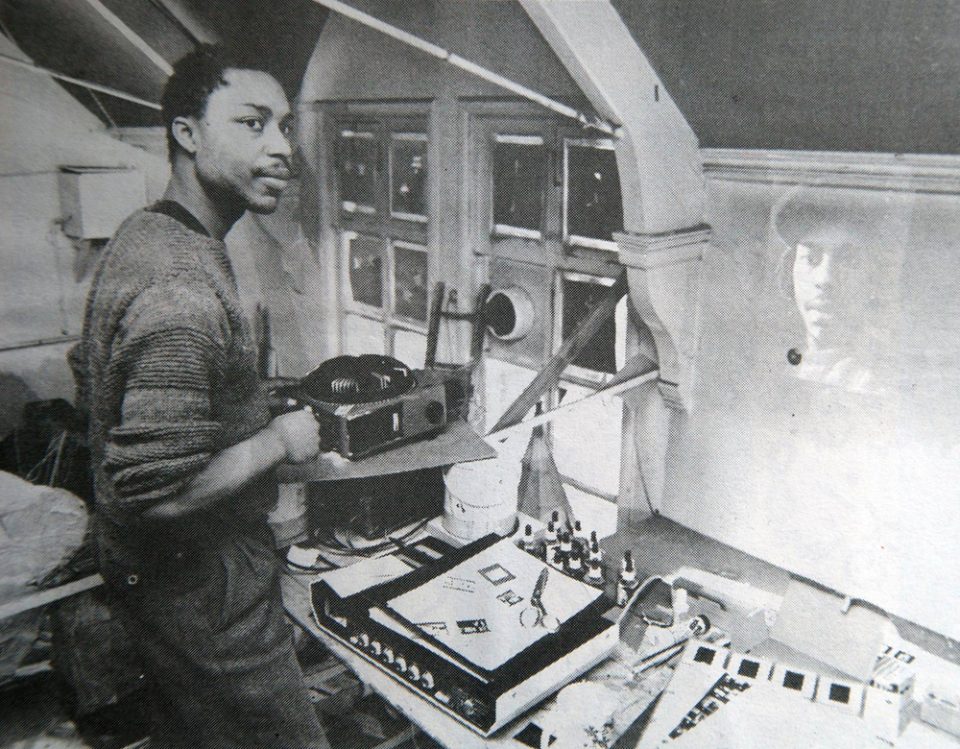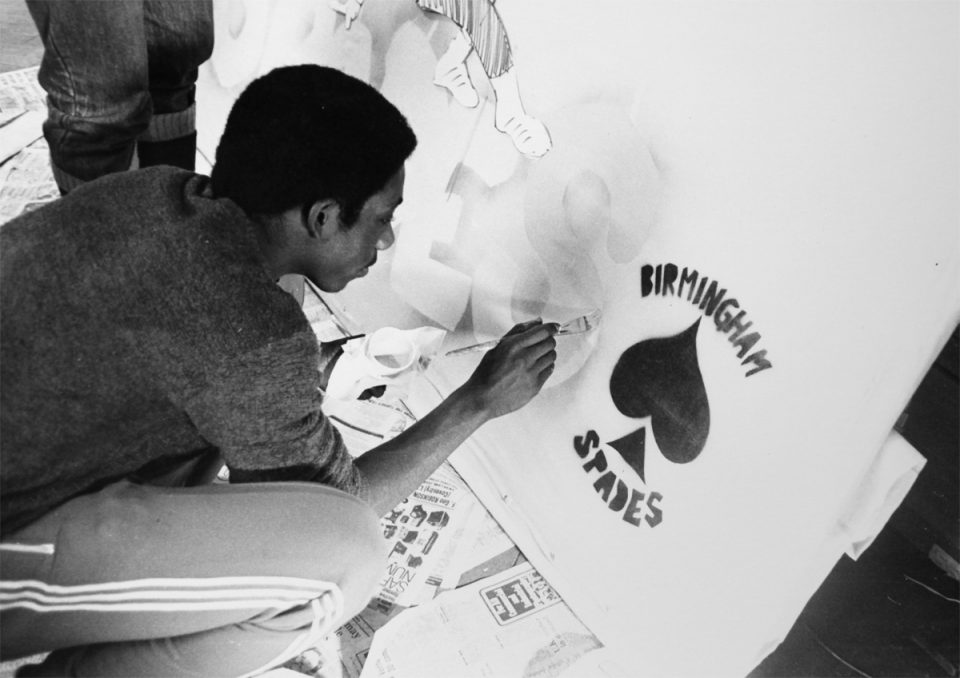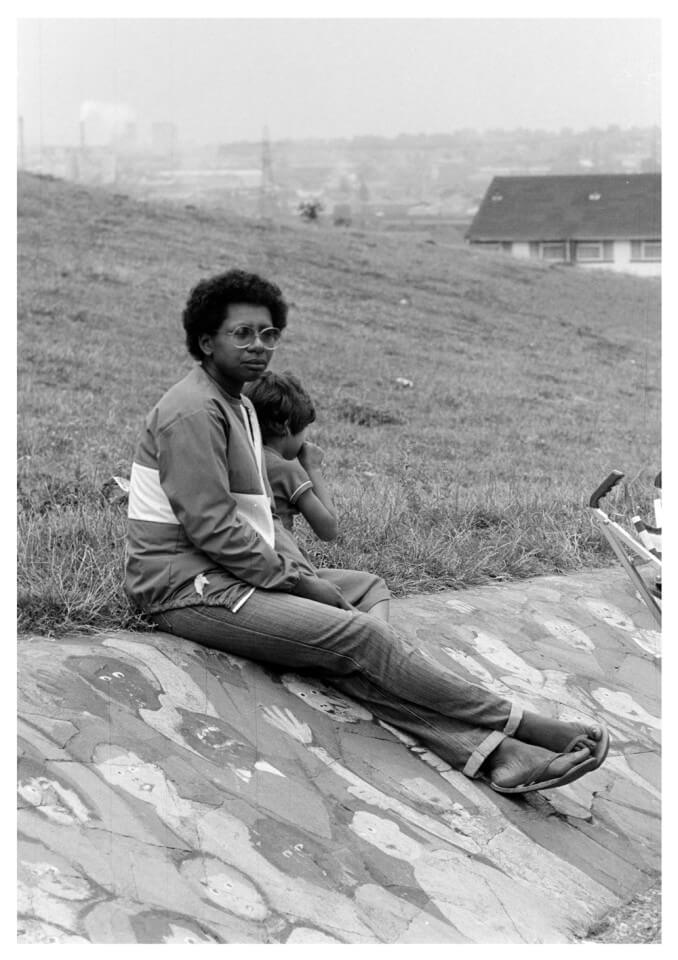By 1985, Jubilee had acquired a second bus – an old British Leyland Titan, front engined with a rear platform. It was garaged at Waterfall Lane, Rowley Regis. This was to be used as a touring exhibition platform. The photograph shows Peter Chaplin and Gary Stewart preparing the bus for an exhibition called ‘Di Deh Yasso’ with materials from an oral history project led by Gary, working with writer Lorraine Griffiths.
Gary first arrived in West Bromwich in the mid-80s, initially awarded a year-long apprenticeship from the Calouste Gulbenkian Foundation to work with Jubilee Arts –one of five such schemes around the country, other beneficiaries of this scheme including a certain François Matarasso. Gary set up shop above the Jubilee office, a plywood construction in the corner of Farley Lodge, Greets Green, only to be reached by a decorating ladder. Here he developed work around tape slide production, experimental photography and sound, as well as participating in various ongoing Jubilee projects. Hailing from down the road in Balsall Heath, Birmingham, Gary had originally attended Moseley Art School and then went to Trent Polytechnic to study electronics and computing.
At the time he wrote: ‘We as black people must put traditional cultural production into a black historical context determined by ourselves and confront contemporary reality by developing our black cultural production to be functional. My role as a black community artist is to assist black people in voicing themselves creatively, providing greater access, participation and opportunity to make social demands which are specified to black people through the expression of our culture. To be an integral part of removing black cultural expression from the framework which limits us through the use of Racist Domination.’
Though coming to work on the boundary of the legendary militant Handsworth, he was a little shocked to find that in the borough of Sandwell itself there was not even one single elected councillor of Afro-Caribbean background, nor ever had been, and there were no organised black groups of any kind – in sharp contrast to his previous experience of living in Hyson Green, Nottingham and being involved with campaigning black groups active in print, performance and cultural resistance. He wondered if this was a case of one step forward, three steps back.
He decided to spend time in pubs and clubs frequented primarily by the black community. Danny Macleish and his wife, who ran The Lodge Tavern in West Bromwich, were particularly welcoming. It was here, over a pint and a game of dominoes, Gary and Lorraine began to collect stories from customers. One man told them that when he first came to England he traveled on the bus free for months, thinking it a wonderful place, until he worked out that the reason was that the conductor would not touch the money proffered by his black hand.
The ‘Di Deh Yasso’ exhibition (meaning There and Here) – made in cut and paste style, collaging text and photographs – toured on the second Jubilee bus and was not without controversy. Each side of the Bus was bedecked with a large hand painted portrait, one of the writer Alice Walker and one based on an iconic portrait of a black man at Victoria station, having arrived from Southampton docks, confidently looking into the camera, his stylish homburg tipped back on his head. These were daubed with racist graffiti while stored in the bus garage. There were complaints from some staff at the depot that the portraits were ‘too large’ and ‘in your face’ – undeterred, the exhibition toured right across the borough, stopping on any appropriate corner, and appeared at various festivals and events throughout the year.
Gary was also deeply passionate about technology. In 1988-89, Jubilee were awarded some additional funding from the Council to spend on capital items. Gary proposed that some of the funding be spent on new digital tools – as he says himself, it may seem a patently obviously thing to do in retrospect, but back then this was a local community arts group working with an 8-track TASCAM portastudio and the value of this emerging technology was unclear.
At that time, he had also brought one of the first Apple computers to Jubilee, a Mac SE/30, which had a black and white screen, 1MB of RAM and ran on floppy discs. Eight of these were soon purchased and used to make the book ‘Bending the Truth a Little Bit’ with young people at Churchfields School. Gary also went out and bought Sound Tools, a card which enabled the computer to record sound. “It cost an extraordinary amount of money at the time, £5000 for just the card, never mind the computer,” he recalls. “And Sound Tools later became Pro Tools.” This was the beginning of Jubilee’s successful foray into the digital world, then a leap into the unknown. Among many other projects, Gary worked on ‘Bickle’ and developed ‘Sex Get Serious’ before leaving in the 1990 to work at ARTEC in Islington, a centre set up originally by Cultural Partnerships, a group Jubilee had a strong relationship and many work exchanges), training young people in digital media. He later went to work at International Institute of Visual Arts as Head of Multimedia. Today, still based in London, he works as an artist and experimental sonic musician and a keen cyclist. With Trevor Mathison he is also part of Dubmorphology who make art installations that examine the relationship between culture, history and technology.
